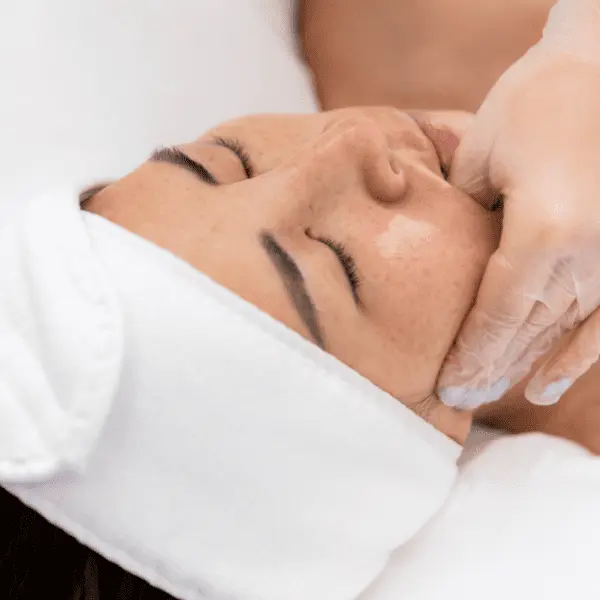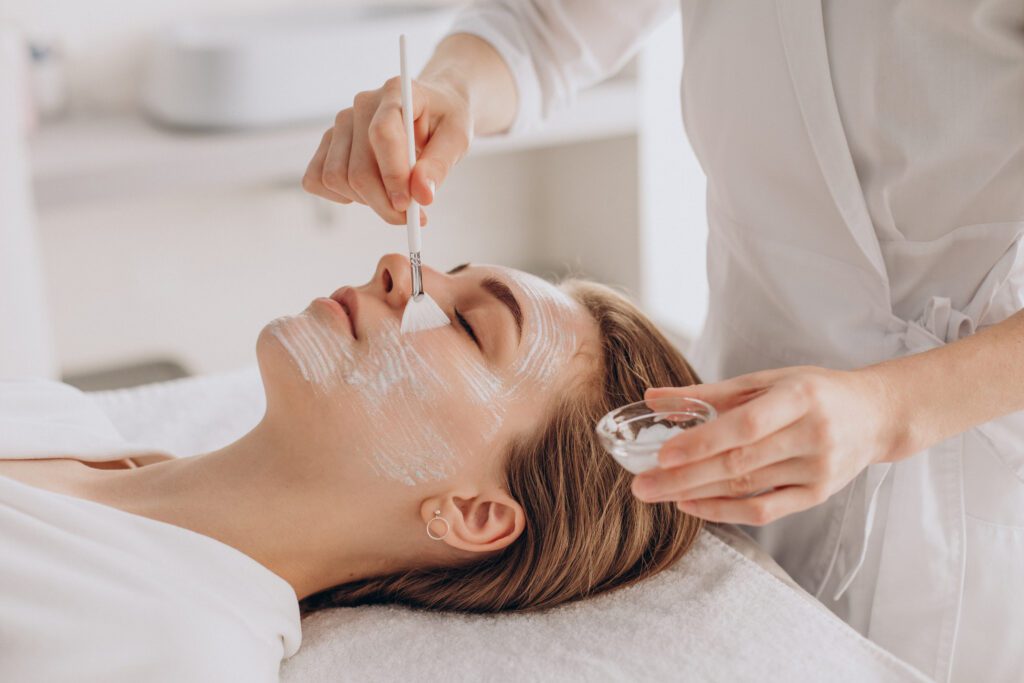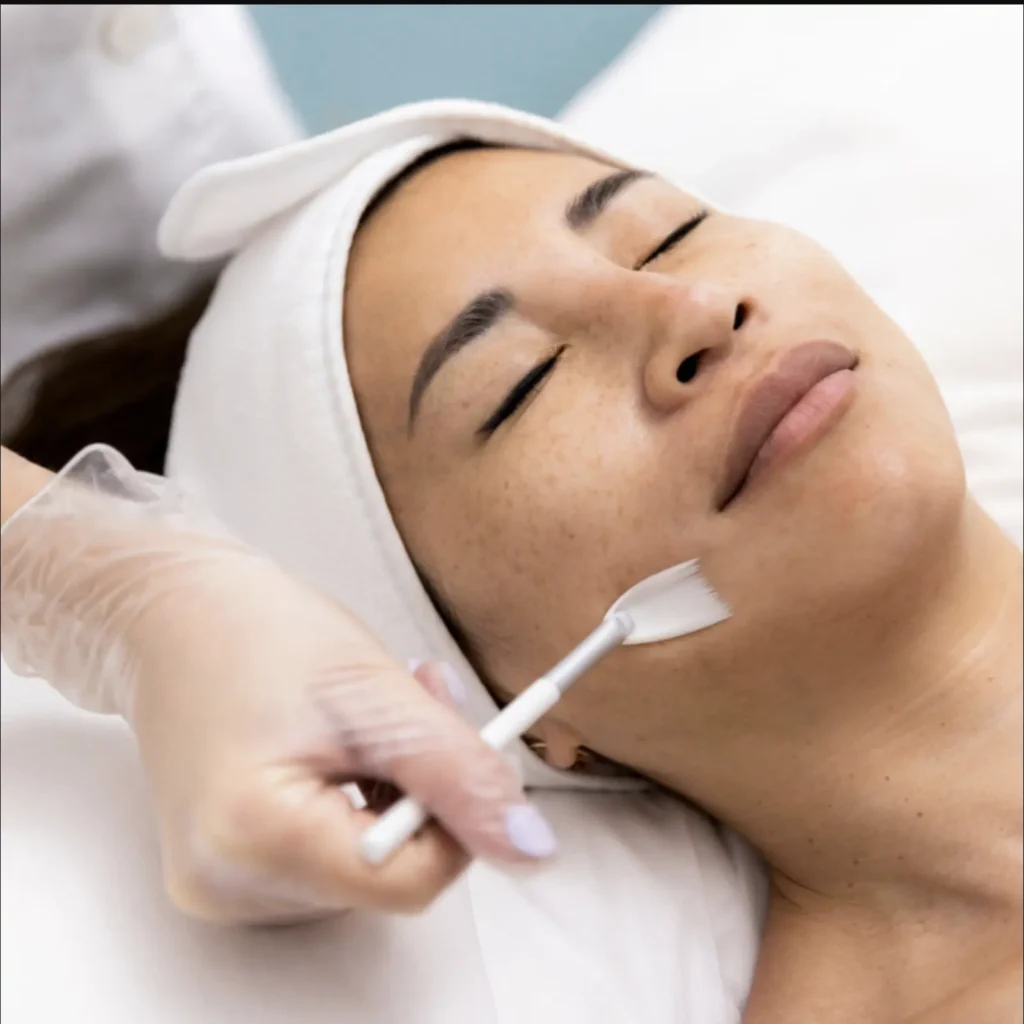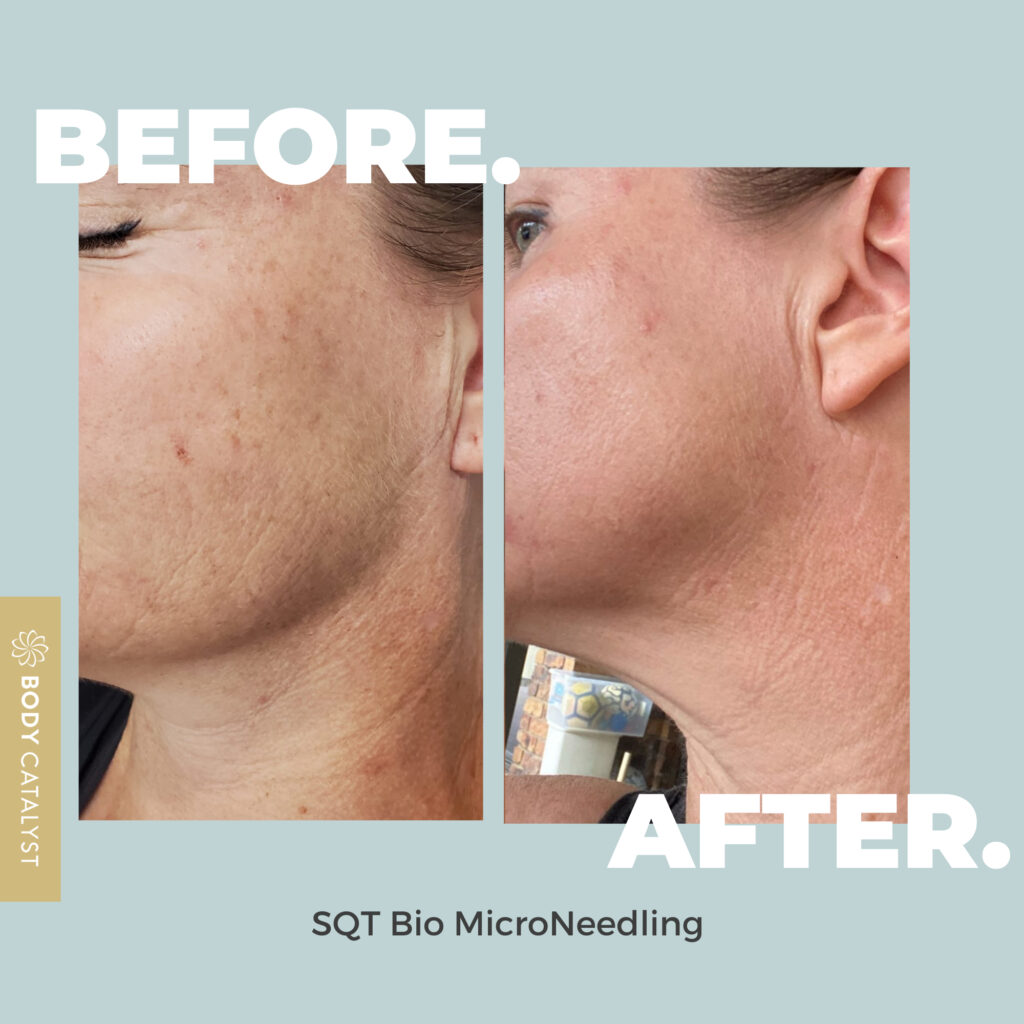
Melasma Treatment: Bio-microneedling

What is Bio-microneedling for Melasma?
Ever looked in the mirror and seen dark patches on your face that won’t go away? If so you may have melasma, a condition that affects millions of people worldwide. Don’t worry there’s a new kid on the block when it comes to treatment options: bio-microneedling! The treatment is giving hope to those struggling with stubborn melasma. Let’s get into the world of bio-microneedling and see how it’s changing melasma treatment.
What is Melasma?
Before we get into the bio-microneedling details let’s take a minute to understand what we’re up against. Melasma is like that unwanted guest at a party – it shows up uninvited and can be a real pain to get rid of.
Causes of Melasma
Melasma doesn’t play favourites – it can affect anyone, but it loves women, especially during pregnancy. The usual suspects behind melasma are:
- Hormonal changes
- Sun exposure
- Genetics
- Certain medications
- Stress
Understanding the distinct patterns of melasma pigmentation is crucial for effective home management and treatment options.
Hormonal Influences
Hormonal influences play a significant role in the development of melasma. The hormonal changes that occur during pregnancy, menopause, or with the use of hormonal birth control can stimulate the production of melanin, leading to the formation of melasma. These hormonal fluctuations can cause an increase in the production of melanocyte-stimulating hormone (MSH), which in turn stimulates the melanocytes to produce more melanin. This excess melanin can lead to the formation of brown or gray patches on the skin, characteristic of melasma.
Environmental Factors
Environmental factors, such as sun exposure, heat, and visible light, can also contribute to the development and worsening of melasma. UV radiation from the sun can stimulate the melanocytes to produce more melanin, leading to an increase in pigmentation. Similarly, heat and visible light can also stimulate the melanocytes, exacerbating the condition. Additionally, exposure to pollution and other environmental stressors can also contribute to the development of melasma. This is why sun protection is crucial in managing and preventing melasma.
Types of Melasma
Melasma can be classified into three main types: epidermal, dermal, and mixed.
Epidermal Melasma
Epidermal melasma is the most common type and is characterized by the presence of excess melanin in the epidermal layer of the skin. This type of melasma is often seen in individuals with lighter skin tones and is typically responsive to topical treatments. Epidermal melasma can be treated with topical creams or serums containing ingredients such as hydroquinone, kojic acid, or azelaic acid. These ingredients help to lighten the pigmentation and even out the skin tone.
Dermal Melasma
Dermal melasma is a more challenging type to treat and is characterized by the presence of excess melanin in the dermal layer of the skin. This type of melasma is often seen in individuals with darker skin tones and can be more resistant to treatment. Dermal melasma may require more aggressive treatments, such as laser therapy or chemical peels, to achieve desired results. These treatments work by targeting the deeper layers of the skin to reduce pigmentation and improve skin texture.
Symptoms
So how do you know if you have melasma? Look out for these signs:
- Dark, irregular patches on your face
- Symmetrical pigmentation (it likes to keep things even)
- Most common on cheeks, forehead, nose and upper lip
What is Bio-microneedling?
No needles here, Australia’s SQT Bio-Microneedling is powered by nature’s finest micro-sculptors — spongilla spicules. These tiny needles are extracted from freshwater sponges and deliver skin-needling results that traditional microneedling can only dream of.
Spongilla spicules are packed with nutrients and minerals, they reach deep into the dermis and epidermis layers of the skin to boost collagen and elastin. This skin needling process, with our patented purification technology, accelerates cell turnover in just 5-7 days instead of 28 days with traditional microneedling!
How Bio-microneedling Works
SQT Australia’s Bio-Microneedling is a pigmentation treatment that reduces pigmentation and sunspots by increasing the absorption of brightening ingredients and accelerating your skin cell turnover and collagen production for a more even skin tone and radiant complexion. Bio-microneedling can be combined with chemical peels containing alpha hydroxy acids, which are effective for treating melasma by exfoliating the skin and reducing pigmentation.
Bio-microneedling Benefits for Melasma
Why bio-microneedling for your melasma? Here’s why:
- Reduces pigmentation
- Improves skin texture
- Boosts collagen
- Radiates skin
- Minimizes fine lines and wrinkles
- Uses your body’s own healing processes
It’s like winning the skincare lottery!
Bio-microneedling for Melasma Results
Now the million-dollar question: does it work? The short answer is yes, for many people! Studies have shown significant improvement in melasma after bio-microneedling treatments.
“Microneedling alone, with 1.5 mm needle length, without the addition of any active medication, can cause lightening of skin stains in patients with recalcitrant melasma.”1
But everyone’s skin is different so results may vary.
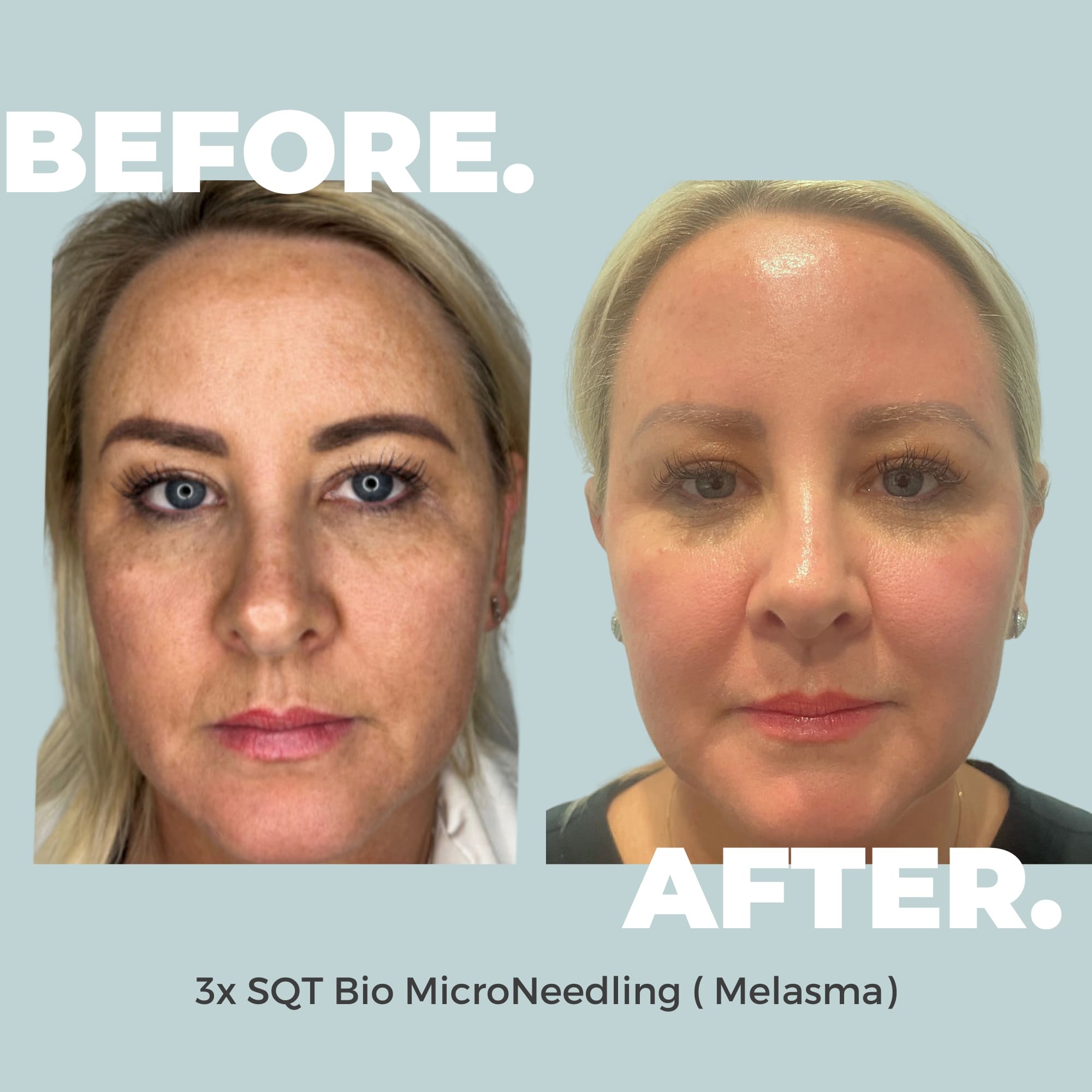
Side Effects and Risks
Like any treatment bio-microneedling has some potential short-term side effects:
- Redness and swelling (temporary)
- Slight bruising
- Dryness or peeling
But don’t let that scare you – most people tolerate the treatment very well.
Bio-microneedling with Other Treatments: Chemical Peels
Bio-microneedling plays nice with others. Many dermatologists recommend combining it with:
- Topical treatments (hydroquinone or kojic acid)
- Chemical peels
- Laser therapy
Laser treatment is another effective option to treat melasma, targeting pigmentation and minimizing side effects.
It’s like creating a superhero team for your skin!
But ensure to speak with your therapist before combining any treatments, as there is a strict time frame that must be followed to avoid overwhelming your skin!
Who is a Good Candidate for Bio-microneedling?
Bio-microneedling is great for many people but not everyone. You might be a good candidate if:
- You have persistent melasma
- Other treatments haven’t worked
- You’re in good overall health
- You have realistic expectations
How Many Sessions?
One SQT Bio-Microneedling Treatment equals 3-5 traditional microneedling sessions. Bio-Microneedling creates 3-5 million micro-channels in minutes, compared to 30,000 with traditional microneedling. This means more nutrient delivery and skin stimulation from the inside out. Results in 5-7 days, not 28!
The amount of sessions you need will depend on the severity of your melasma. Despite being able to see noticeable results from one session, for best results, we recommend packs of either 3-6 which your therapist will advise at your free consultation.
Bio-microneedling vs Other Melasma Treatments
How does bio-microneedling compare to other treatments? Here’s a breakdown:
- More effective than topical treatments alone
- Less downtime than deep chemical peels
- More natural than laser treatments
- Results can last longer than other options
Treating melasma often requires a combination of different approaches, including bio-microneedling, to achieve the best results.
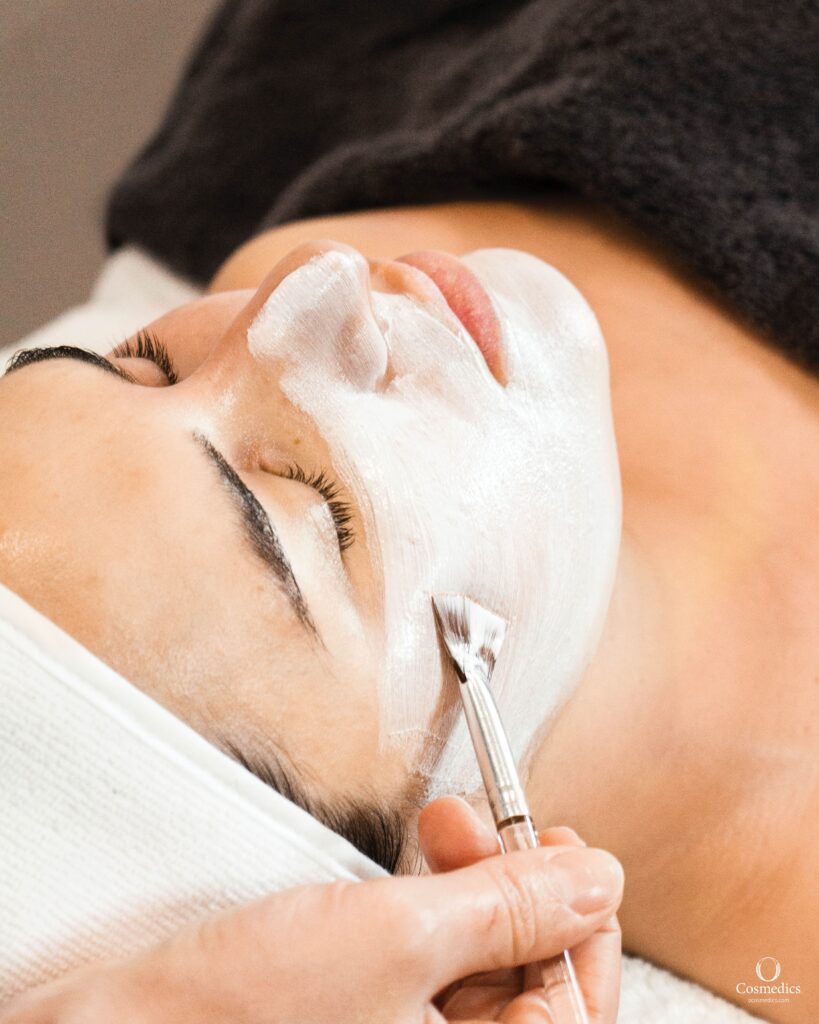
How to Maintain Results
Want to make your results last?
- Wear sunscreen daily
- Follow a good skincare routine
- Consider maintenance treatments
- Manage stress and hormonal factors
Speak to Body Catalyst
Bio-microneedling for melasma treatment is the secret weapon in the battle against stubborn skin pigmentation. If you’re tired of hiding behind foundation or feeling self-conscious about your skin, bio-microneedling might just be the solution for you! Remember everyone’s skin is different so a consultation with one of our expert therapists will help determine if this treatment is right for you. Here’s to clear skin in your future!
Have more questions about Bio Microneedling or ready to book your free consultation? Contact us online or directly via the phone by calling 1800 THESHIFT. Join us on this journey to having healthier, more beautiful skin today!
References
1 Lima EA. Microneedling in facial recalcitrant melasma: report of a series of 22 cases. An Bras Dermatol. 2015; 90(6):919-21.
https://www.ncbi.nlm.nih.gov/pmc/articles/PMC4689089/
2 Gupta AK, Gover MD, Nouri K, Taylor S. The treatment of melasma: a review of clinical trials. J Am Acad Dermatol. 2006;55:1048–1065.





